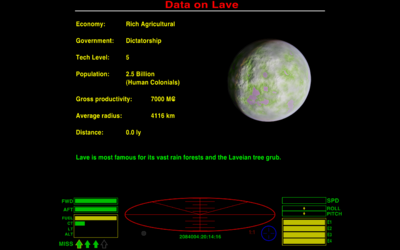Galactic Catalogue
Also known as "The Register of Worlds"
Contents
Overview
It’s been over a century since the Galactic Co-operative published the definitive Register of Worlds.
It took ninety years standard to compile the Register. Ninety years of official visits, editorial committees, reviews, complaints, boards of enquiry, threats, diplomatic incidents and at least one full-blown military exchange; megalitres of sweat, ichor, blood, tears, and pretty much any other biological fluid you care to mention were poured out in its compilation, and billions of credits spent. So why is it such a paltry collection of bald statistics, fuzzy orbital clips and some of the least informative one-line descriptions you could possibly imagine?
The Register was originally intended to be a comprehensive catalogue of every planet in the Eight Sectors, filled with metadata, hyperlinked to here and back again, constantly updated and built on a semiotic platform so fundamental that it would be immediately comprehensible to any sentient being. And then the compromises began. It was unfair to include olfactory information-cells, because only a subset of the insecta used them; illustrative material got boiled down to conform to the most basic visual spectra; and entire concepts were banned because they lay outside the ideological ranges of certain species. Professional, ethical and political disputes ensued, followed by swingeing budget cuts and drastic downward revisions to the programme. The whole procedure almost fractured the Co-operative. Eventually, after the grand Fourth Editorial had pared everything down to the utter minimum, the Register as we know it today was published and everyone has been bitching about it ever since – but no-one is willing to suggest revising or even updating it. ...From Zaonce (Rough Guide)
Classic Elite
1984 Classic Elite expanded these "Goat Soup" descriptions using a Fibonacci sequence operating on the Galaxy Seeds.
This was also true for the earlier versions of Oolite, but Oolite v.1.80 replaced the process with a massive Planetinfo.plist instead!
OXPs
- Famous Planets adds in more information (a paragraph's worth) for some 100 systems in Galaxies 1 and 2.
See Also
- F7 page (data on "system") - where you find these entries in-game
- Oolite planet list - link to the 8 pages describing each galaxy with the Galactic Catalogue entry for each
- Rough Guide to the Ooniverse - rather more detail on a handful of planets
- GalCop Galactic Registry - OXP which does not give these descriptions
- Oolite Literature - other literature existing inside Oolite (eg.: The Traders Almanach)
